Recent datasets
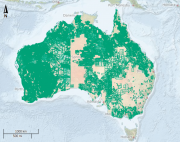
Before an act is done, which may affect native title, a Government party must issue a notice under s 29 of the NTA (s 29 notice or future act notice). The notice provides details of the proposed act and specifies a date (notification date) from which persons have either 3 or 4 months to object to the act or become a native title party with rights to negotiate about the doing of the act.
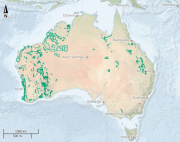
A "future act determination application" (FADA) is a future act application that a negotiation party makes to the Tribunal for a determination that the act must not be done, the act may be done or the act may be done with conditions (s 38 of the NTA).
A FADA cannot be made within 6 months of the notification date nor if an agreement in relation to the act has been made between the negotiation parties (s 35 of the NTA).
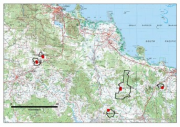
Seven paired Control/Treatment gully sites on commercial grazing properties in the Burdekin are presented here as part of the monitoring project NESP TWQ Project 5.9 - Gully Remediation Effectiveness as an extension to the NESP TWQ Project 2.1.4 - Demonstration and evaluation of gully remediation on downstream water quality and agricultural production in GBR rangelands (Bartley et al., 2018).

This dataset shows the effects of herbicides (detected in the Great Barrier Reef catchments) on the growth rates (from cell density data) and photosynthesis (effective quantum yield) on the green algae Desmodesmus asymmetricus during laboratory experiments conducted during 2019.
This project will continue a unique data set that documents long-term trends in coral reef communities of the Great Barrier Reef (GBR). In 2012-13 and 2014-15 the LTMP will resurvey the ‘core’ reefs that have been surveyed since 1992.
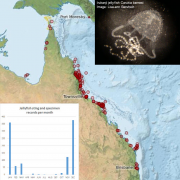
This dataset contains records of sting events and specimen samples of jellyfish (Irukanji, Halo irukanji, Box jellyfish and Morbakka) from the Venomous Jellyfish Database. This dataset contains an extract of 1081 sting events (in CSV format) from along the north Queensland coast between December 1883 to March 2017. The full database contains approximately 3000 sting events from around Australia and includes records from sources that have not yet been cleared for release.
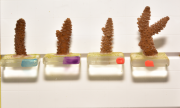
This dataset shows the combined effects of climate change (ocean warming (OW) and ocean acidification (OA)) and the herbicide diuron (frequently detected in the Great Barrier Reef catchments) on the chlorophyll a fluorescence (effective quantum yield, Delta F/Fm'), net photosynthesis (photosynthetic oxygen production and respiration rates) and calcification rates (light and dark calcification) on the coral Acropora millepora during laboratory experiments conducted in 2018.

The aim of this study was to investigate the effects of the herbicide diuron and climate change on the Photosystem II activity of the seagrass Halophila ovalis. The 3 climate conditions were: ambient (28.5 °C, 398 µatm), 2050 (29.5 °C, 682 µatm) and 2100 (30.5 °C, 873 µatm). This dataset consists of one data file (spreadsheet) from a 2-week experiment, containing 5 diuron concentrations and 3 climate change scenarios. Each tab contains photosynthetic yield data at each time point: 0 d, 2 d, 7 d and 14 d under each of the diuron and climate change treatments.

This dataset contains data from experiments testing the survival of fertilised Acropora millepora gametes before and after settlement in different climate and sediment treatment conditions. One datafile shows the development and survival until competency for settlement, which has been tested at the National Sea Simulator. A second file demonstrates the settlement success after development in these treatments.

This dataset consists of two data files (spreadsheets) from a 15 days experiment simulating the combined effects of climate change (manipulated temperature and pCO2 from present days and predicted for 2050 and 2100) and diuron contamination. Photosynthetic parameters were used to evaluate the physiological responses of Halimeda opuntia.
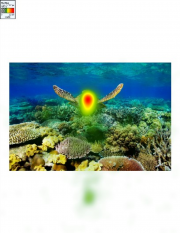
This dataset consists of three data folders for the eye-tracking experiment conducted within the NESP 3.2.3 project (Tropical Water Quality Hub): Folder (1) The folder of Eye-tracking videos contains 66 Tobii recordings of participants’ eye movements on screen, Folder (2) The Heatmaps folder includes 21 heatmaps created by Tobii eye-tracking software on the basis of 66 participants’ data and Folder (3) The input folder has 21 original pictures used in eye-tracking experiment.
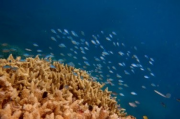
This dataset contains the caffe deep-learning framework along with the setup for image aesthetic train and test code for the Algorithm data. We used NVIDIA-digit 6 environment and this version use caffe 0.15.14 More details information can be found in http://caffe.berkeleyvision.org.
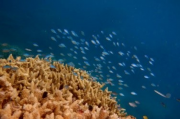
This dataset consists of three data folders including all related documents of the online survey conducted within the NESP 3.2.3 project (Tropical Water Quality Hub) and a survey format document representing how the survey was designed. Apart from participants’ demographic information, the survey consists of three sections: conjoint analysis, picture rating and open question. Correspondent outcome of these three sections are downloaded from Qualtrics website and used for three different data analysis processes.
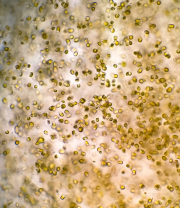
This dataset shows the effects of herbicides (detected in the Great Barrier Reef catchments) on the growth rates (from cell density data) and photosynthesis (effective quantum yield) on the microalgae Chaetoceros muelleri during laboratory experiments conducted from 2018-2019.

This dataset shows the effects of herbicides (detected in the Great Barrier Reef catchments) on the growth rates (from cell density data) and photosynthesis (effective quantum yield) on the microalgae Rhodomonas salina during laboratory experiments conducted from 2018-2019.
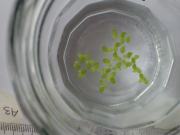
This dataset shows the effects of herbicides (detected in the Great Barrier Reef catchments) on the growth rates (from frond number and surface area) and photosynthesis (effective quantum yield) on the duckweed Lemna aequinoctialis during laboratory experiments conducted from 2017-2019.
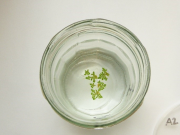
This dataset shows the effects of herbicides (detected in the Great Barrier Reef catchments) on growth rates (from surface area and biomass) and photosynthesis (effective quantum yield) on the aquatic fern Azolla pinnata during laboratory experiments conducted in 2019.
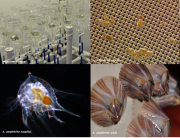
This dataset shows the effects of of the insecticide imidacloprid and the fungicide propiconazole on larval development of the acorn barnacle Amphibalanus amphitrite experiments conducted in 2018 and 2019.

This dataset shows the effects of herbicides (detected in the Great Barrier Reef catchments) on the growth rates (from cell density data) and photosynthesis (effective quantum yield) on the green algae Raphidocelis subcapitata during laboratory experiments conducted during 2019.
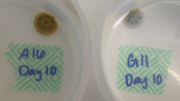
This dataset shows the effects of hexazinone (detected in the Great Barrier Reef catchments) on growth (as bell surface area), photosynthesis (effective quantum yield), zooxanthellae density (cells mm-2) and statolith number on the upside-down jellyfish Cassiopea maremetens during laboratory experiments conducted in 2017.



